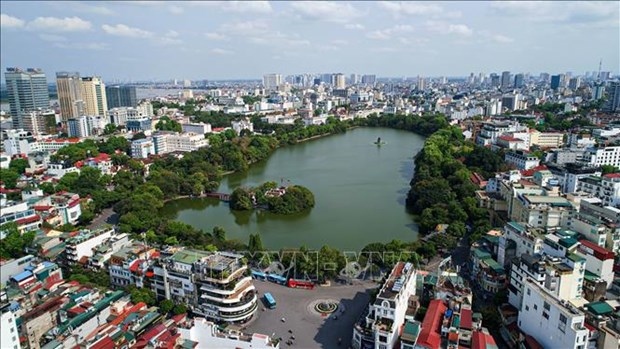Hanoi envisages to become international trade hub
Hanoi will carry out an array of industry and trade development measures with a view to building the capital city into an international trade hub in the region and the country, as well as concretising the resolution adopted at the municipal Party Organisation's 17th congress.
The municipal Department of Industry and Trade plans to lure more investments, and outline support measures and programmes to encourage businesses to land investment in modern distribution and sales systems such as shopping malls and supermarkets.
It is striving to develop five regional-level wholesale centres, ten regional-level shopping malls, 12 logistics centres, 68 trade centres, 850 supermarkets and 140 markets.
Besides, Hanoi, which houses to 6,000 information technology firms and two IT parks, has taken lead in the country in terms of ICT revenue.
Furthermore, the capital city has witnessed the sound development of infrastructure at industrial zones, with 17 high-tech industrial parks, 70 industrial clusters with stable operation, and 43 newly-established industrial clusters. Handicraft industry has been encouraged and received support, with 1,350 craft villages which attract tens of thousands of labourers.
According to Deputy Director of the municipal Department of Industry and Trade Tran Thi Phuong Lan, thanks to timely response to the COVID-19 pandemic and natural disasters, the sector attained robust achievements during the 2016-2020 period.
The whole sales and retail sales contributed greatly to the gross regional domestic product (GRDP), she said, adding total retail sales and social services picked up average 10.54% each year.
Although the city’s exports were battered by global supply chain disruption due to COVID-19, export revenue during 2016-2020 surged 8.8%, or 1.68 times higher than the 2011-2015 period, Lan said, attributing the results to the city’s flexible policies and drastic guidance.
However, tough challenges are ahead for the city’s industry and trade sector. They come from the curtailment of industrial production as most of the large production facilities move out of the central city, and limited investment in high-tech industry and weak development of supporting industry. Besides, attracting investments in local industrial parks is not an easy task since industrial land leasing costs in Hanoi are higher than those in localities in the vicinity such as Ha Nam, Hoa Binh and Hung Yen.
The city also found difficulties in luring investments in trade infrastructure due to a lack of competent management policies and mechanisms.
During the 2021-2025 period, the sector targets 7.5-8% growth in the added value of the local industrial products, 9.5-9.7% growth in exports, and 9-10% in retail sales and social services.
Lan said that the sector will work to remove bottlenecks for local firms, especially supporting enterprises and those manufacturing key industrial products, while capitalising on the fourth industrial revolution to promote development of high-added value products and supporting industry.
In addition, it will call for investments in industrial infrastructure, and enhance state management to improve operation efficiency of local firms, she added.

